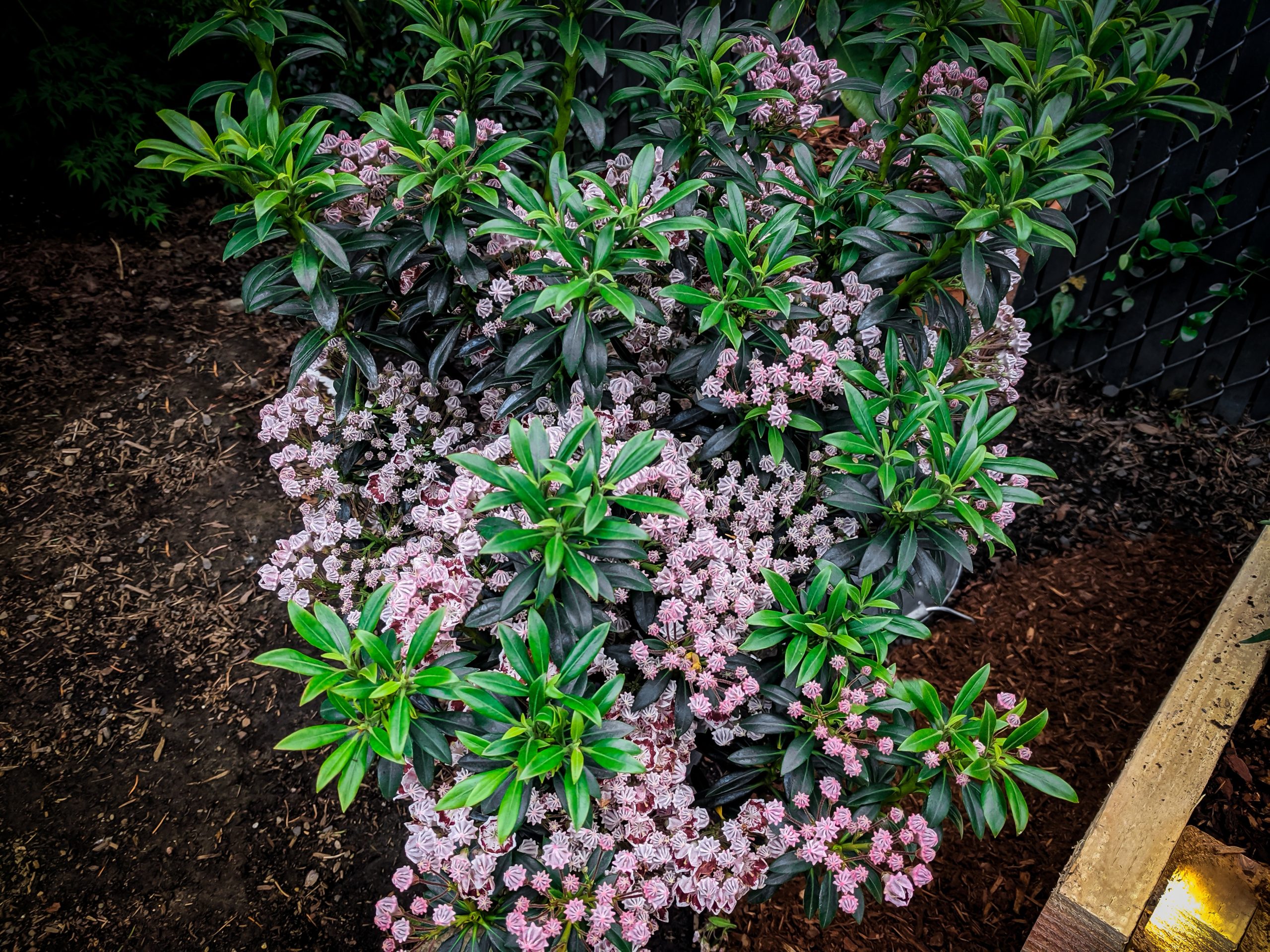

Tags: #contorted trunk #hummingbirds #evergreen #poisonous #interesting bark #wildlife plant #native shrub #cover plant #dwarf #cpp #fire high flammability #NC native #deer browsing plant #children's garden #native garden #playground plant #naturalizes #pollinator plant #fantz #flowers late spring #flowers early summer #food source herbage #food source nectar #food source pollen #bird friendly #nectar plant late spring #food source hard mast fruit #mammals #butterfly friendly #nectar plant early summer #nectar plant mid-spring #Piedmont Mountains FACU #Coastal FACU #problem for cats #problem for dogs #problem for horses #Audubon #poisonous nectar #flowers mid-spring 'Bullseye', 'Carol', 'Carousel', 'Elf', 'Keepsake', 'Minuet', 'Olympic Fire', 'Pink Charm', 'Pristine', 'Richard Jaynes', 'Sarah', 'Snowdrift' Red flower buds that open to a rich pink to coral color with dots on the petals See this plant in the following landscape: Cultivars / Varieties: While the nectar poses no problems for bees, if honey bees feed heavily on these plants, they are known to produce "mad honey" that can be toxic for human consumption. It is also susceptible to leaf spots and blights. Insects, Diseases, and Other Plant Problems: Mountain laurel is susceptible to borers, scale, white fly, and lace bugs.

Attractive foliage makes this a good choice for year-round interest. It blooms in late spring to early summer, and its buds and fruits are showy. Remove spent flower clusters immediately after bloom and prune branches back lightly after bloom to promote bushy growth. In heavy soils, raised plantings should be considered to promote better drainage. The plant does not grow well in heavy clay soils or wet soils. Mulch to retain moisture and keep root zones cool.
KALMIA MINUET FULL
Mountain laurel tolerates a wide range of light conditions, from full sun to full shade, but grows best in partial shade (morning sun with early to mid-afternoon shade) and in cool, moist, acidic, humus-rich, well-drained soils.

Linnaeus named the genus after Swedish botanist Peter Kalm (1716-1779), who explored plant life in parts of eastern North America from 1747 to 1751. Rarely it will grow to 32 feet tall as a small tree, particularly on slopes in the Appalachian Mountains. It can grow slowly to 6 to 10 feet tall as a dense, rounded shrub, opening up and developing gnarly branches with age. Mountain laurel is a broadleaf, evergreen shrub or small tree in the Ericaceae (blueberry) family that is native to eastern North America, where it is found in a variety of habitats, including open rocky or sandy woods, cool meadows, balds, mountain slopes, acidic forests, and woodland margins. Phonetic Spelling KAL-mee-ah lah-tih-FOH-lee-ah This plant has high severity poison characteristics.


 0 kommentar(er)
0 kommentar(er)
